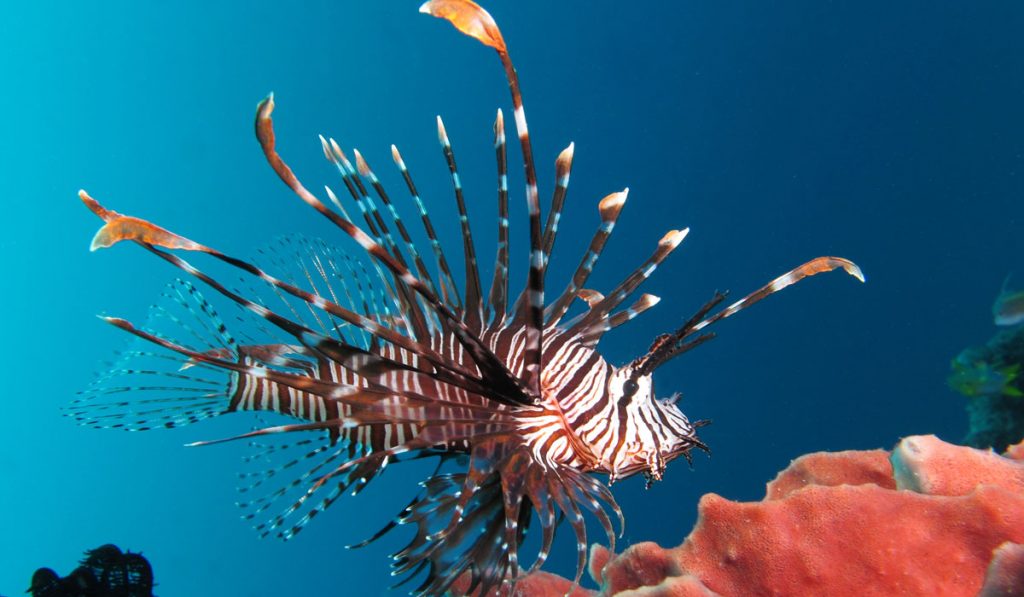
Meet the lionfish: the attractive, but deadly predator that’s terrorizing oceans and decimating ecosystems.
Native to the Indian and Pacific oceans, lionfish have now made themselves at home throughout the Atlantic, from the eastern United States to the Caribbean, and more recently the Mediterranean Sea. They’ve proven remarkably persistent, multiplying in droves and wiping out native fish and invertebrates.
Their strength seems to be in their numbers.
Armed with venomous spines that make them hard to defend against, they hunt in packs to surround and trap their prey. They use their long, ornate fins to herd smaller fish towards barriers, before using powerful suction to quickly swallow them whole. And it seems they’ll eat pretty much anything, as researchers identified 37 different species of prey in the stomachs of lionfish — including other lionfish!

What’s more, lionfish are capable of producing 2 million eggs a year and encounter few, if any, natural predators in their new habitats, which has allowed them to colonize entire ecosystems unchecked.
It is believed that the fish may have first been released into the Atlantic Ocean by aquarium owners more than 30 years ago. Now, they may be “one of the greatest threats” to our reefs, according to the National Oceanic and Atmospheric Administration.

So what to do? Well, scientists say our only hope may be to actively hunt and kill these fish. In fact, people have already added lionfish to their diets, and the word on the street is it’s delicious!
Watch the lionfish in action:
Click here to learn about another invasive species taking over Florida: the Burmese python.




